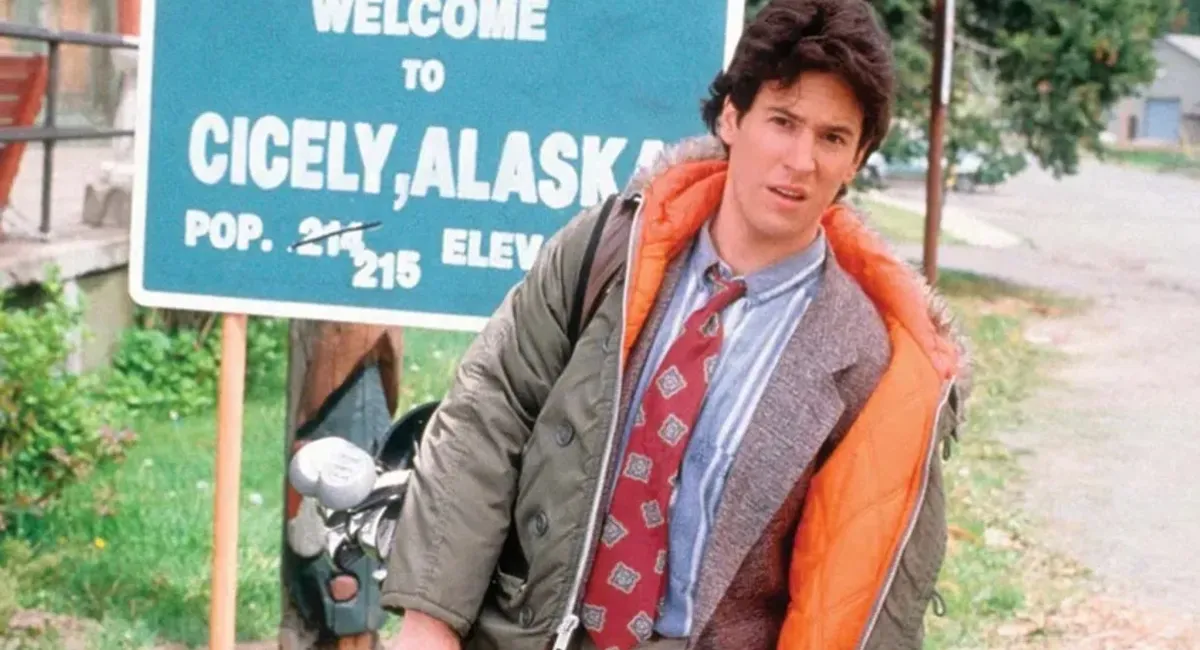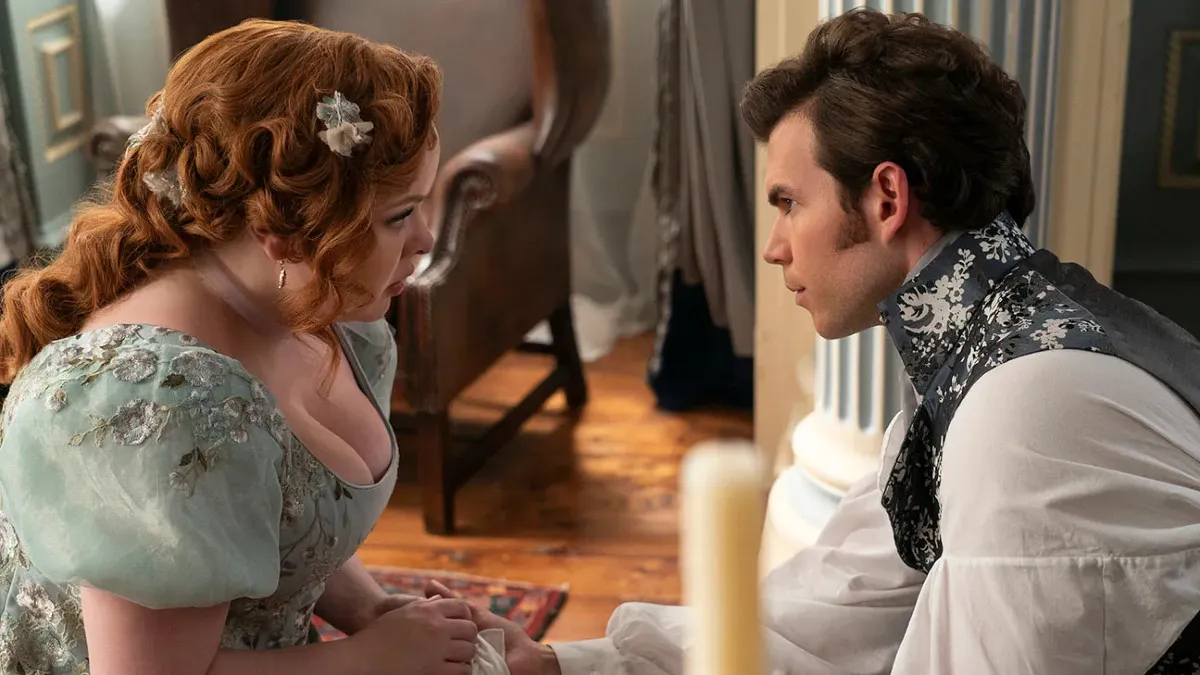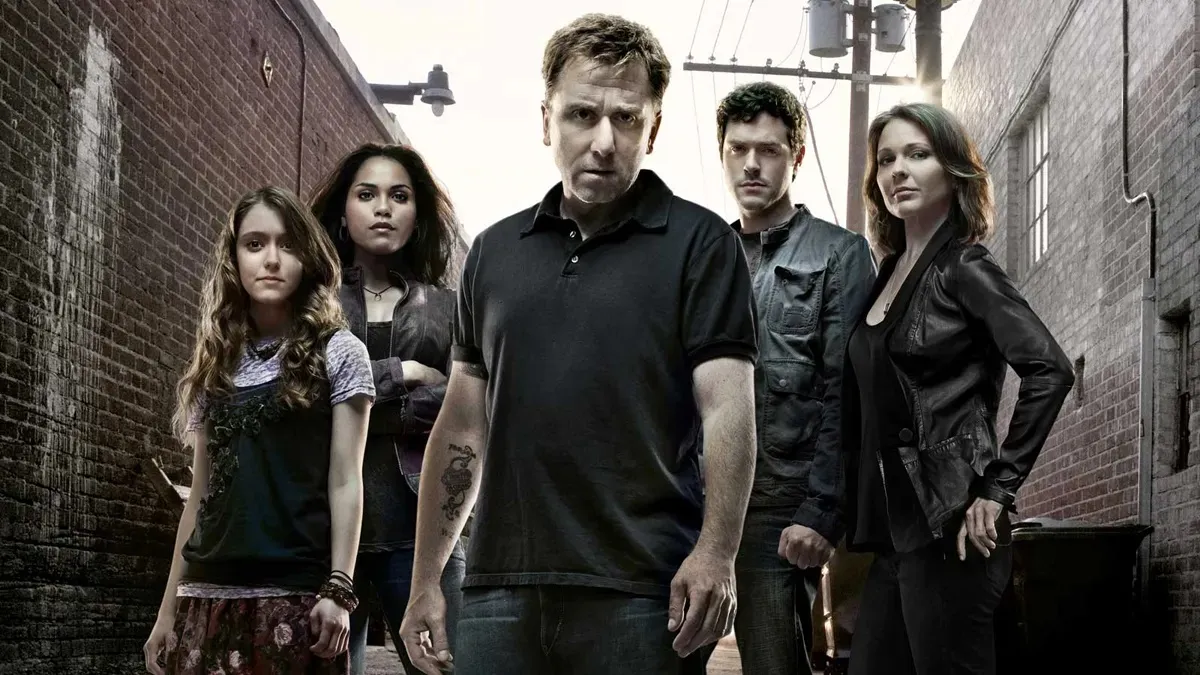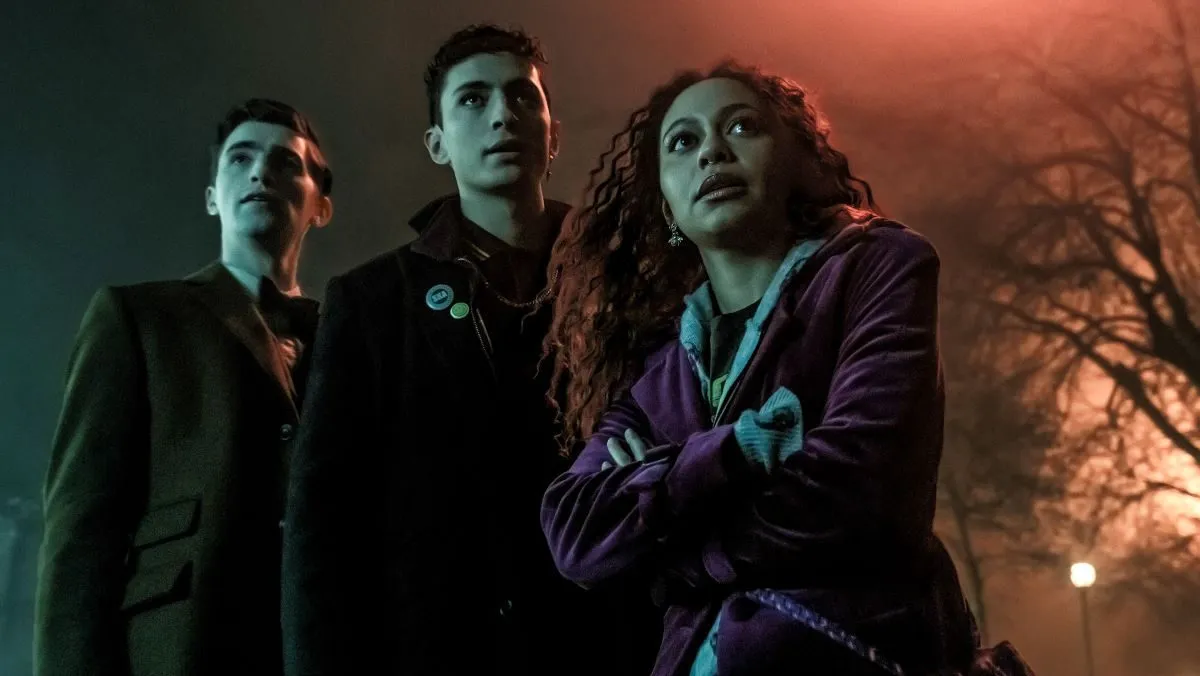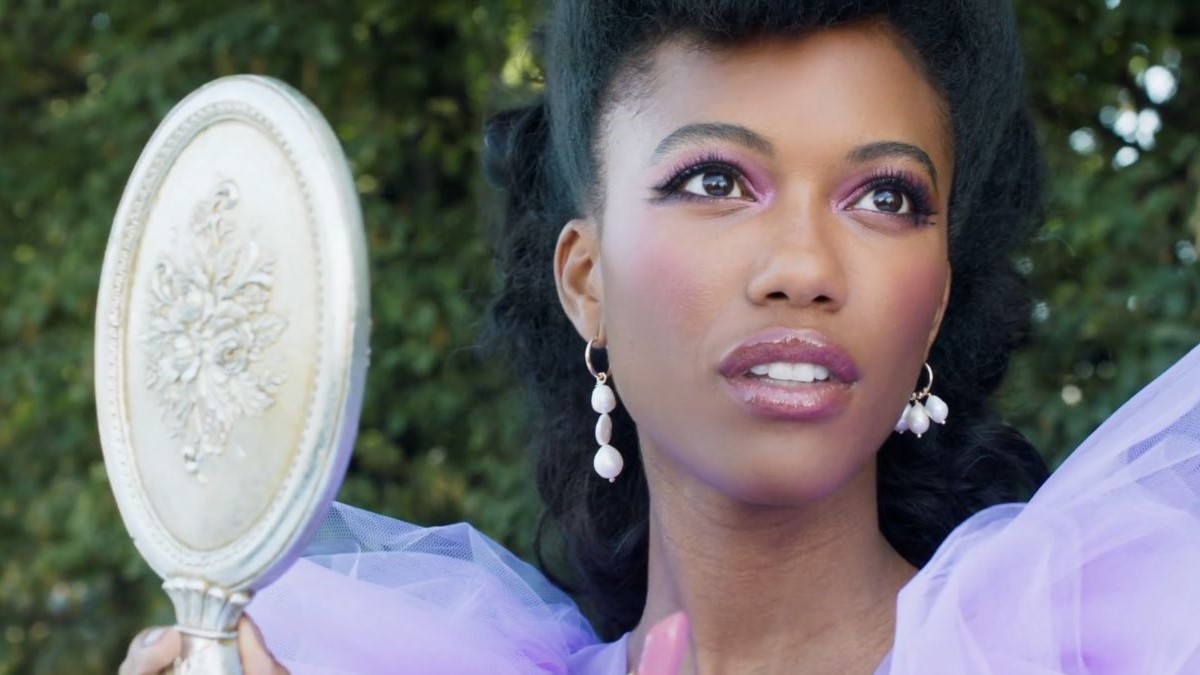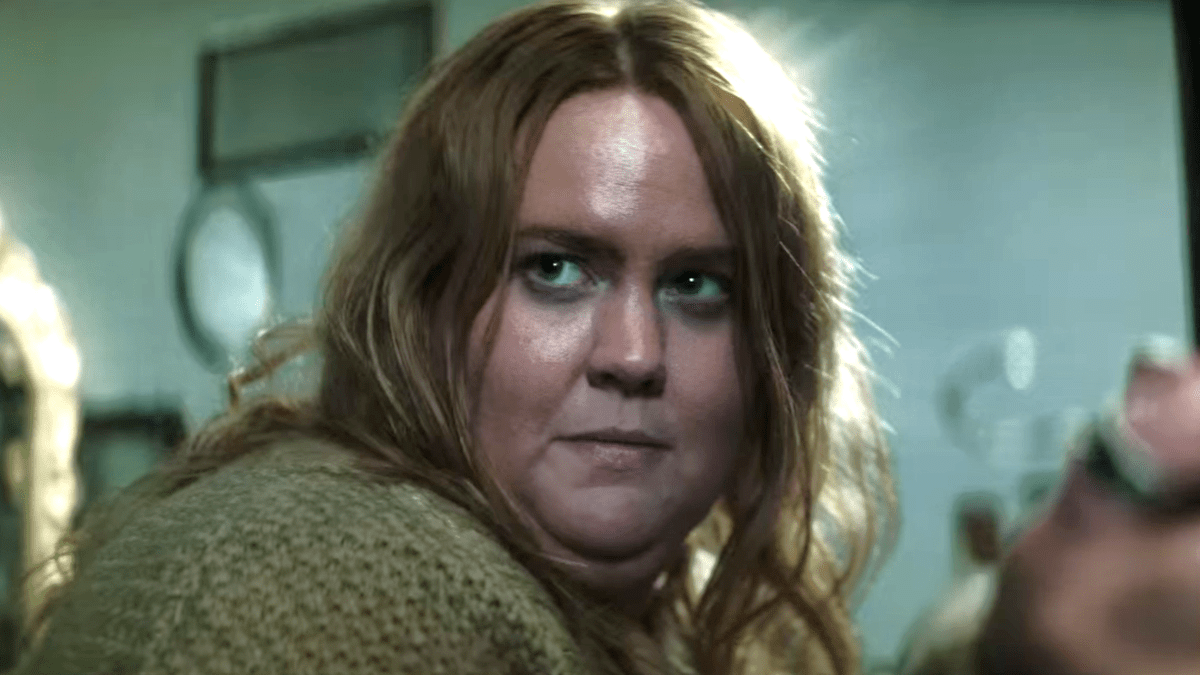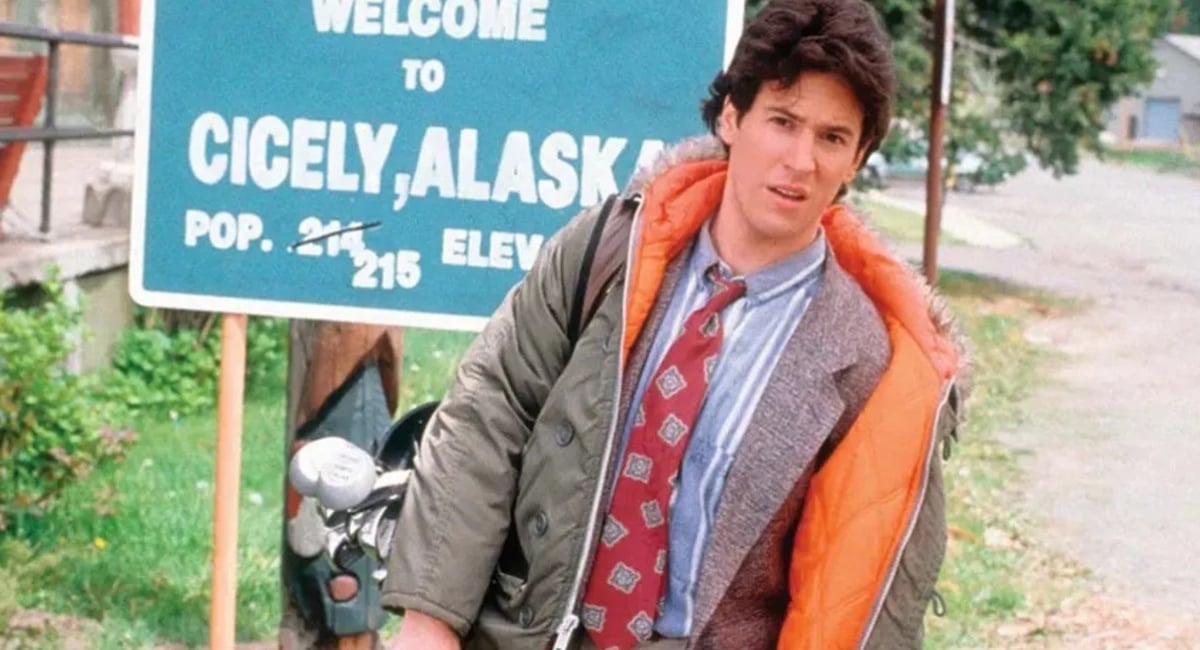
All six seasons of the Emmy-winning series Northern Exposure are currently streaming for the first time EVER on Prime Video. Previously, viewers could only return to Cecily, Alaska via digital purchase or on DVD. (And before that, VHS.)
Northern Exposure ran on CBS from 1990 to 1995. Created by Joshua Brand and John Falsey of St. Elsewhere fame, Northern Exposure is about Dr. Joel Fleischman (Rob Morrow), a Jewish physician who recently graduated from Columbia University’s medical school in New York City. To pay back the State of Alaska for financing his training (a real-world practice where the state subsidizes someone’s medical education), Fleischman is forced to open a small practice in a town of approximately 850 people in the fictional “Alaskan Riviera.”
The bumpy road to a good show
Over six seasons of “The Sentimental Education of Joel Fleischman” (as one critic once dubbed the show and which has become something of a running joke in my house), the good doctor learns of his miseducation in the ways of the world as he explores what it means to be Jewish in a small Alaskan town. Although, for about four seasons, there’s nothing sentimental about it, as Joel acts like a Jewish stereotype gone amok.
Morrow is Jewish, yet the show explores Joel’s Russian Jewish identity and how the remote Alaskan location shapes it in a sometimes dated way. These range from mildly annoying, like when Joel has NYC bagels flown in (presumably Zabars; it’s always Zabars) and assumes no one in Cecily has heard of the traditional deli food, to more insidious, as in Joel’s sudden obsession with counting pennies in season 5. The character is, as Cecily’s local bigot Maurice (Barry Corbin) says, “one of those Jewish doctors from New York” and is overall characterized as kvetchy, hand-wringing, and elitist—something he never really overcomes (surprisingly this is addressed in a season 6 episode about Yom Kippur, which is one of the best reinterpretations of the Charles Dickens’s A Christmas Carol that I have ever seen). And although Fleischman is a Republican, which actually makes him less of a stereotype, it makes him seem more like one on-screen.
Furthermore, Fleischman’s re-education is frustratingly slow, with no real permanent behavioral changes until season 5. Maybe that’s due to the show’s simple formula. In each episode, Fleischman does something wrong and is forced to confront his biases and reform. It doesn’t work with the streaming format, which allows for fast-paced viewing of a series, something that has changed how writers introduce new story beats. In the ’90s, when Northern Exposure first aired, there was no thought given to the idea that these shows would be binged in one day, so viewers were re-reminded of the status quo each week.
In 2024, the creators’ commitment to formula, especially in the first couple of seasons, makes Northern Exposure a frustrating binge, as you want Fleischman’s character development to move faster. And I can’t help but think of Dan Harmon’s Community, which first aired from 2009 to 2015 and had a similar premise: A hotshot professional gets sentimentally educated by a group of misfits. Except Community gets to the sentimental education much faster, making everything else smoother. (Fun fact: Jack Black appears in both.)
At least the series seems self-aware that everyone hates Joel. Contrast this with how the show deals with Chris(t) Stevens (John Corbett), Cecily’s white, ex-con radio DJ, an unironic messiah figure, who, at one point in the series, has no problem declaring himself a person of color. In another instance, Chris, who is trying to get in touch with his “womanhood,” gets overly graphic about childbirth during a baby shower. Still, at least in this case, the other characters elect to evict him from the room, with one woman commenting that if he wanted to know what being a woman was like, he should cut his salary in half. Despite these glaring flaws, the other characters regularly come to Chris for advice throughout the show as if he’s the local priest. (To be fair, he can marry people because he answered an ad in Rolling Stone and spent a week living at a monastery.)
And that’s how the series goes. Throughout, I can see seeds of great ideas with poor and/or outdated execution. As Joel’s big-city background clashes with Cicely’s frontier culture, his relations with its eccentric people are tested, and its ’90s prime-time TV; sometimes, the execution of those clashes is handled better than others.
Joel’s receptionist, Marilyn Whirlwind, was played by Elaine Miles, who is of Cayuse and Nez Perce ancestry and a registered member of the Umatilla Confederated tribe (whereas Marylin is an Alaska Native). She has been critical of how the show portrayed Indigenous Alaskan tribes, especially in the first season when the show didn’t seem to have culture consultants, and she still wasn’t confident about bringing up her discomforts to producers. “That first season, they had me pronounce every letter and consonant,” Miles recalled to Nerds of Color. “It was crazy because Natives don’t talk like that.”
What the show does well
The show is at its best when focusing on the quirky residents of Cecily and the town’s history, or, to borrow an embarrassingly popular phrase of the time—its herstory, which is something I appreciated much more as an out adult. In the multi-Emmy Award-winning third season finale in 1991, “Cecily,” a visitor from the town’s past arrives and gives the current townsfolk an oral history of the queer women who founded it and the utopia they envisioned where everyone could be free to be themselves. As a queer culture writer, I have to mention that American TV’s first scripted gay wedding happened in season 5, episode 21, “I Feel the Earth Move,” airing in 1994. That very year, two men applied for an Alaskan marriage license, which led to the State banning gay marriage in 1998.
But the show breaks barriers in less serious ways, too. Very few shows have consistently made me say, “What the f**k?” as Northern Exposure.
During my re-watch, something that stood out was the uniqueness of the plotlines about the characters’ sex lives (no kink-shaming, though). At times, these plotlines feel shoehorned in, like the B plot in season 3, episode 15, “Democracy in America,” where Shelly (Cynthia Geary) can’t stop talking about how elections turn her on, or how the main character trait of Chris(t) is that women flock to him—literally, its as if his pheromones draw them in from all over the country, a skill he uses to help Ed (Darren E. Burrows) attract a mate for his pet crane—or when Maggie (Janine Turner) is angry with Fleischman that he didn’t have sex with her when she was unconscious. Okay, that last plotline isn’t unique, it’s creepy because, as Joel points out, that would have been rape.
Returning to the series, I’m surprised I was even allowed to watch new episodes alongside my parents. I asked my mom about this recently, and her response was, “Is any of it explicit?” I guess I’m just a prude—or am I? When the sex plotlines inexplicably disappear in season 4, I missed when the show was horny on main.
However, Fleischman’s rationalism and Chris’s plotline are also the entry point for one of the show’s best traits: the various magical realism happenings around the town (like when Maggie maybe had sex with a bear or when Shelly meets Mother Nature, played by Regina King), which are often explored through the idea of Carl Jung’s collective unconscious (like when Chris has dreams intended for his brother Bernard, causing him to experience a similar longing, or when the townspeople start having each other’s dreams). In this regard, the series owes a lot to the magical realism and high strangeness of a series that debuted almost concurrently: Twin Peaks.
Set in the Pacific Northwest, Northern Exposure debuted on July 12, 1990, mere months after David Lynch and Mark Frost’s supernatural mystery debuted on ABC. Northern Exposure was filmed in Roslyn, Washington, near Snoqualmie Falls and North Bend, where parts of Twin Peaks were shot. (Ultimately, budget constraints forced Lynch to move production to Calvert Studios in Van Nuys, California.) But the comparison is beyond skin deep. The show invites comparison with the Frost/Lynch show, with one scene even referencing Twin Peaks directly.
In Northern Exposure season 1, episode 5, “Russian Flu,” Lynch’s show is given the nod, with music reminiscent of Angelo Badalmenti’s score playing over a scene of the characters discussing coffee, donuts, and cherry pie, a.k.a. the Twin Peaks edible trifecta, and a “log lady.” And it’s these moments that make the show sparkle.
(featured image: CBS)



